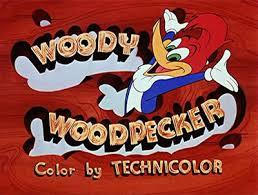Woody Woodpecker is an anthropomorphic animated woodpecker, inspired by the acorn woodpecker and also resembling the pileated woodpecker, who appeared in theatrical short films produced by the Walter Lantz animation studio and distributed by Universal Pictures. Though not the first of the screwball characters that became popular in the 1940's, Woody is one of the most indicative of the type. Woody was created in 1940 by Walter Lantz and storyboard artist Ben "Bugs" Hardaway, who had previously laid the groundwork for two other screwball characters, Bugs Bunny and Daffy Duck, at the Warner Bros. cartoon studio in the late 1930's. Woody's character and design would evolve over the years, from an insane bird with an unusually garish design to a more refined looking and acting character in the vein of the later Chuck Jones version of Bugs Bunny. Woody was originally voiced by prolific voice actor Mel Blanc, who was succeeded by Ben Hardaway and later by Grace Stafford, wife of Walter Lantz. Lantz produced theatrical cartoons longer than most of his contemporaries, and Woody Woodpecker remained a staple of Universal's release schedule until 1972, when Lantz closed down his studio. The character has been revived since then only for special productions and occasions, save for one new Saturday morning cartoon television series, The New Woody Woodpecker Show, for the Fox Network in the late 1990's to early 2000's. Woody Woodpecker cartoons were first broadcast on television in 1957 under the title The Woody Woodpecker Show, which featured Lantz cartoons book ended by new footage of Woody and live-action footage of Lantz. Woody has a motion picture star on the Hollywood Walk of Fame on 7000 Hollywood Boulevard. Woody Woodpecker also made a cameo alongside many other famous cartoon characters in the 1988 film Who Framed Roger Rabbit.
Woody Woodpecker first appeared in the short Knock Knock on November 25, 1940. The cartoon ostensibly stars Andy Panda and his father, Papa Panda, but it is Woody who steals the show. The woodpecker constantly pesters the two pandas, apparently just for the fun of it. Andy, meanwhile, tries to sprinkle salt on Woody's tail in the belief that this will somehow capture the bird. To Woody's surprise, Andy's attempts prevail, and Woody is taken away to the funny farm — but not before his captors prove to be crazier than he is. The Woody of Knock Knock was designed by animator Alex Lovy. Woody's original voice actor, Mel Blanc, would stop performing the character after the first two cartoons to work exclusively for Leon Schlesinger Productions (Later renamed Warner Bros. Cartoons), producer of Warner Bros. Looney Tunes and Merrie Melodies. At Schlesinger's, Blanc had already established the voices of two other famous "screwball" characters who preceded Woody, Daffy Duck and Bugs Bunny. Ironically, Blanc's characterization of the Woody Woodpecker laugh had originally been applied to Happy Rabbit, a Bugs Bunny predecessor, in shorts such as the aforementioned Elmer's Candid Camera, and was later transferred to Woody. Blanc's regular speaking voice for Woody was much like the early Daffy Duck, minus the lisp. Once Warner Bros. signed Blanc up to an exclusive contract, Woody's voice-over work was taken over by Ben Hardaway, who would voice the woodpecker for the rest of the decade. During that time, Blanc's "Guess Who" and laugh are archive sound.
Woody Woodpecker got his own theme song in 1947 when musicians George Tibbles and Ramey Idriss wrote "The Woody Woodpecker Song", making ample use of the character's famous laugh. Kay Kyser's 1948 recording of the song, with Harry Babbitt's laugh interrupting vocalist Gloria Wood, became one of the biggest hit singles of 1948. Other artists did covers, including Woody's original voice actor, Mel Blanc. Lantz first used "The Woody Woodpecker Song" in Wet Blanket Policy (1948), and it became the first and only song from an animated short subject to be nominated for the Academy Award for Best Song. Lantz soon adopted the song as Woody's theme music, and due to the song's popularity, Woody Woodpecker fan clubs sprang up, theaters held "Woody" matinees, and boys got the "Woody Woodpecker" haircut.
Woody Woodpecker cameos in nearly every film that movie pioneer George Pal, a good friend of Walter Lantz, made. produced or directed. For example, during the 1966 sequence in The Time Machine (1960), a little girl drops her Woody Woodpecker doll as she goes into an air raid shelter. In Doc Savage: The Man of Bronze (1975), Grace Stafford cameos, carrying a Woody Woodpecker doll. Woody was number 46 on TV Guide's list of the 50 Greatest Cartoon Characters of All-Time in 2002 and 2003. He came in at number 25 on Animal Planet's list of The 50 Greatest Movie Animals in 2004. The character has been referenced and spoofed on many later television programs, among them The Simpsons, American Dad!, South Park, The Fairly OddParents, Family Guy, Seinfeld, Robot Chicken, Three's Company, and Flash Toons. Woody Woodpecker is the mascot for the Universal Studios Theme Parks. In 1998 and 1999, Woody appeared on the nose of the Williams Formula One Team, and in 2000, he became the official team mascot of the Honda Motorcycle Racing Team. A Woody Woodpecker balloon has been a staple of the Macy's Thanksgiving Day Parade since 1982.

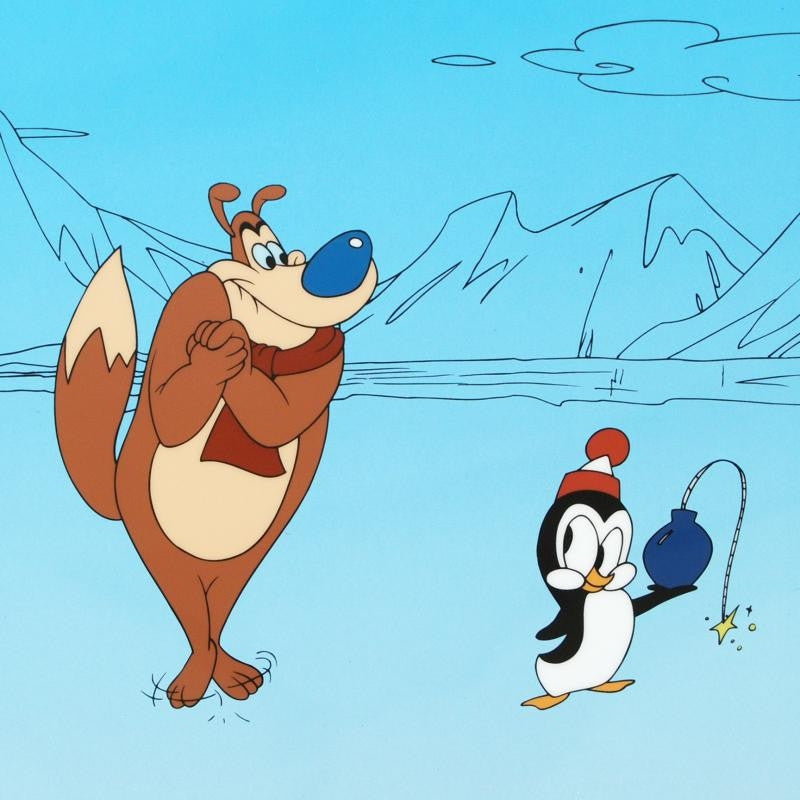 Vendor:Chilly Willy - Limited Edition Sericel by Paul J. Smith (1906-1980) and Universal StudiosArt Deals
Vendor:Chilly Willy - Limited Edition Sericel by Paul J. Smith (1906-1980) and Universal StudiosArt Deals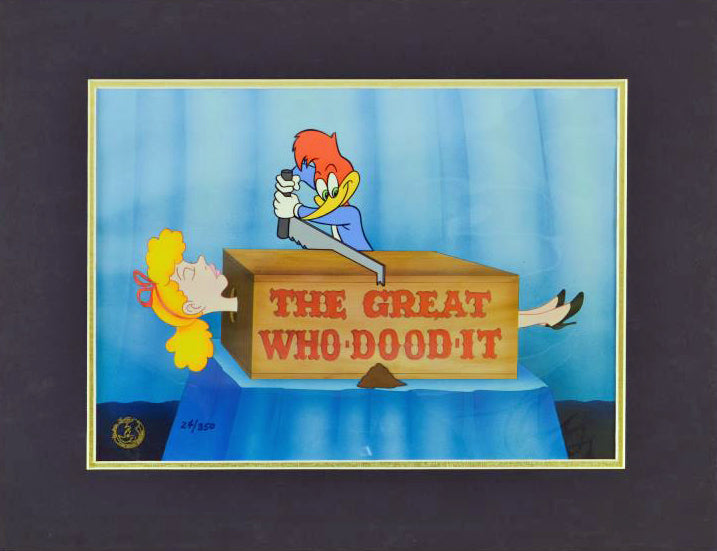
 Vendor:The Great Who-Dood-It - Limited Edition Hand Painted Animation Cel by Walter Lantz StudiosArt Deals
Vendor:The Great Who-Dood-It - Limited Edition Hand Painted Animation Cel by Walter Lantz StudiosArt Deals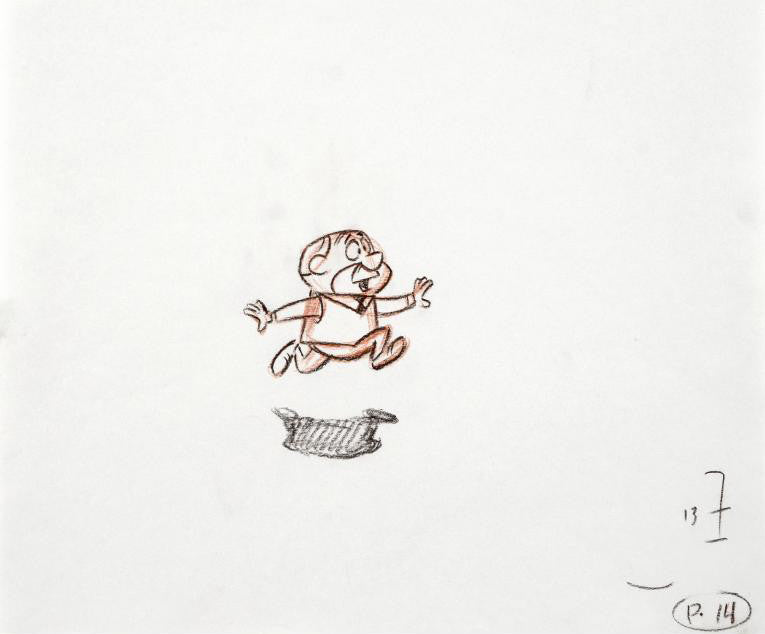
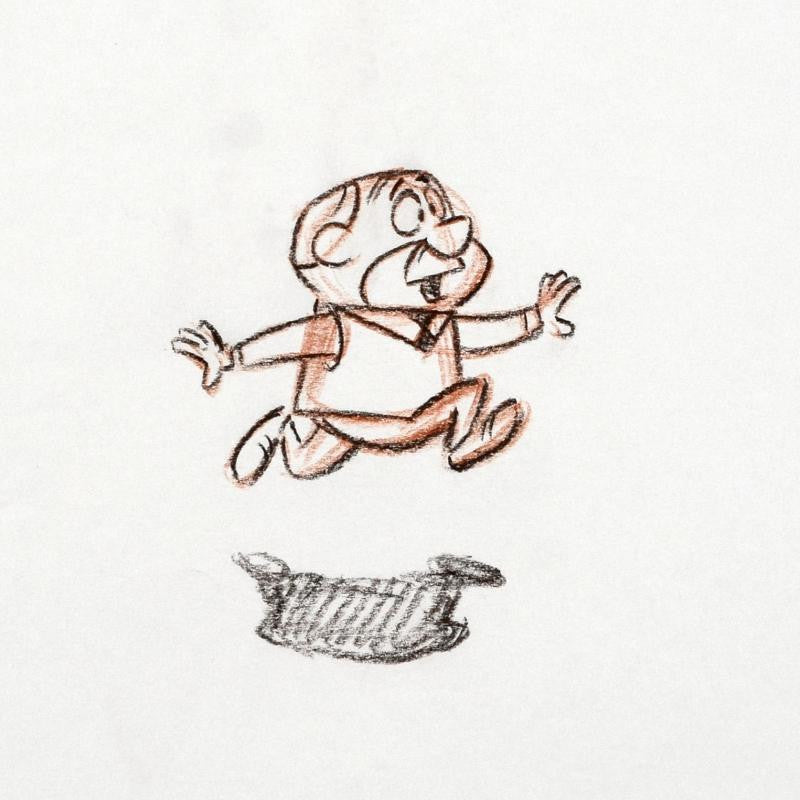 Vendor:Untitled Original Pencil Production Drawing on Studio Animation Paper by Walter Lantz (1899-1994)Art Deals
Vendor:Untitled Original Pencil Production Drawing on Studio Animation Paper by Walter Lantz (1899-1994)Art Deals
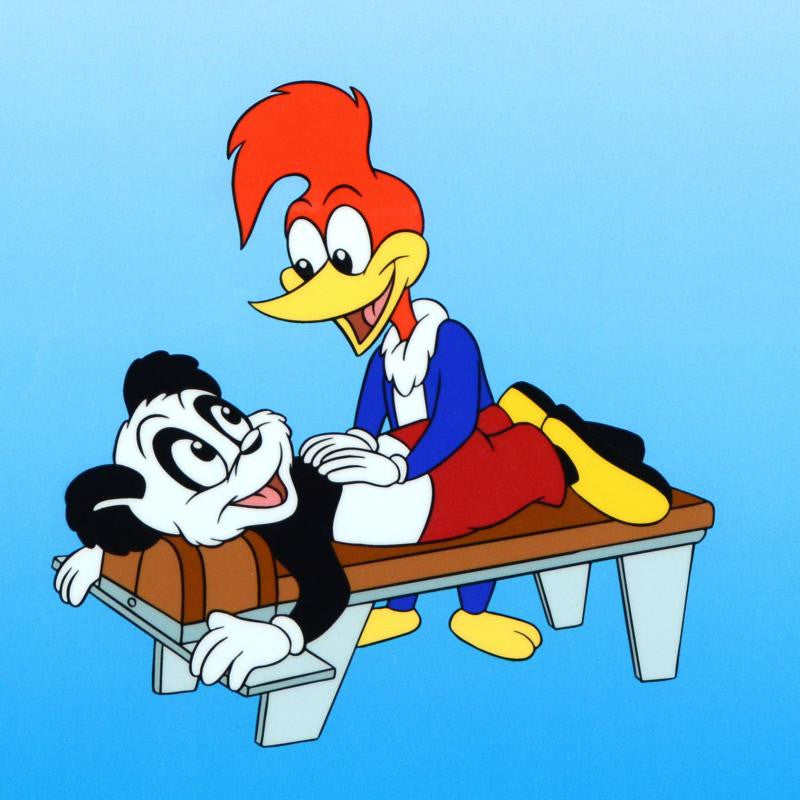 Vendor:Woody Woodpecker - Limited Edition Sericel by Universal Studios, Inc.Art Deals
Vendor:Woody Woodpecker - Limited Edition Sericel by Universal Studios, Inc.Art Deals

